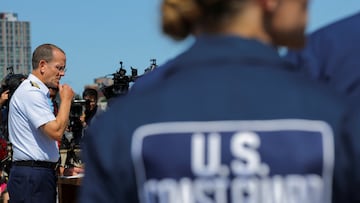How much did the search for the Titan submarine cost? Who paid for it?
The international search and rescue team scoured the Atlantic Ocean looking for the missing Titan submersible at considerable cost. Who will pay?

A week ago, the Titan submersible carrying a crew of five to the wreckage of the Titanic lost communication with the mainland, leading to a massive international search and rescue mission that brought together the governments of Canada, France, the United Kingdom, and the United States. Last week, officials involved in the search confirmed that the passengers perished instantly when the vessel collapsed due to implosion.
The United States mobilized the Coast Guard and used three C-17 transport planes that belonged to the US Army, as well as an aquatic drone that is capable of showing what is 20,000 feet underwater, more than 6,000 meters, and sending clear images.
For its part, Canada contributed to the operation with a patrol plane and two surface boats, one of which had doctors specialized in diving medicine that arrived on the scene on Thursday. Lastly, France also joined the search by contributing a ship equipped with a remotely operated vehicle called the Victor6000.
The cost to the public
Each of the three passengers that purchased a ticket to board the Titan paid $250,000, for a total of $750,000. Looking at the expenses of the US government alone, the search and rescue mission was more costly than what was paid by the tourists. The Washington Post released a conservative estimate based on publically available information and some interviews with government personnel that put the price at $1.2 million. Exactly who will fit the bill is unknown, but in the short term, the costs have been borne by the public.
However, the authors acknowledge that the figure is likely to rise, particularly when combined with that spent by the Canadian and French governments. Additionally, the Canadian government is continuing to carry out an investigation into the incident to determine whether any laws were broken that would warrant a criminal investigation into the company leading the trip.






